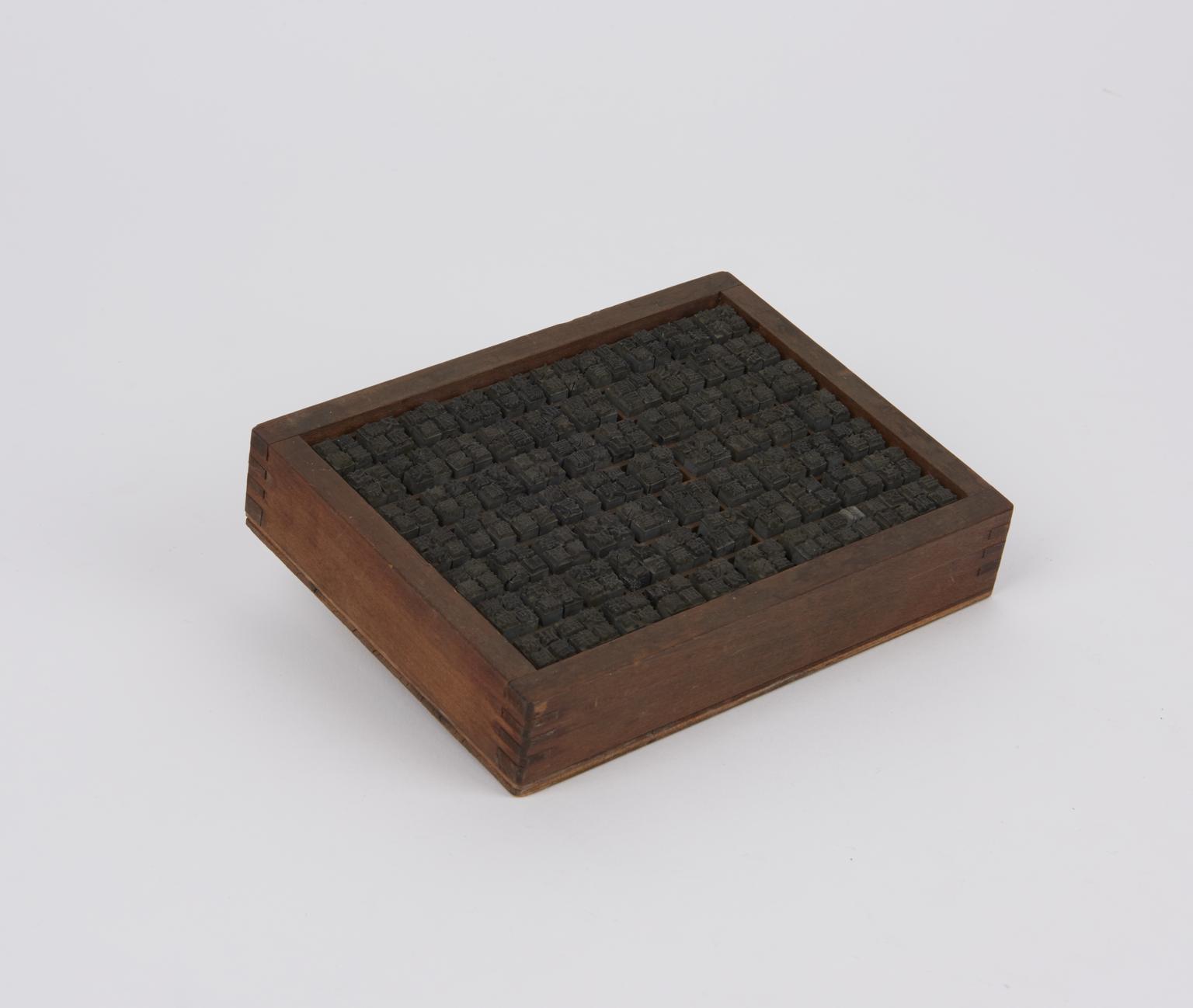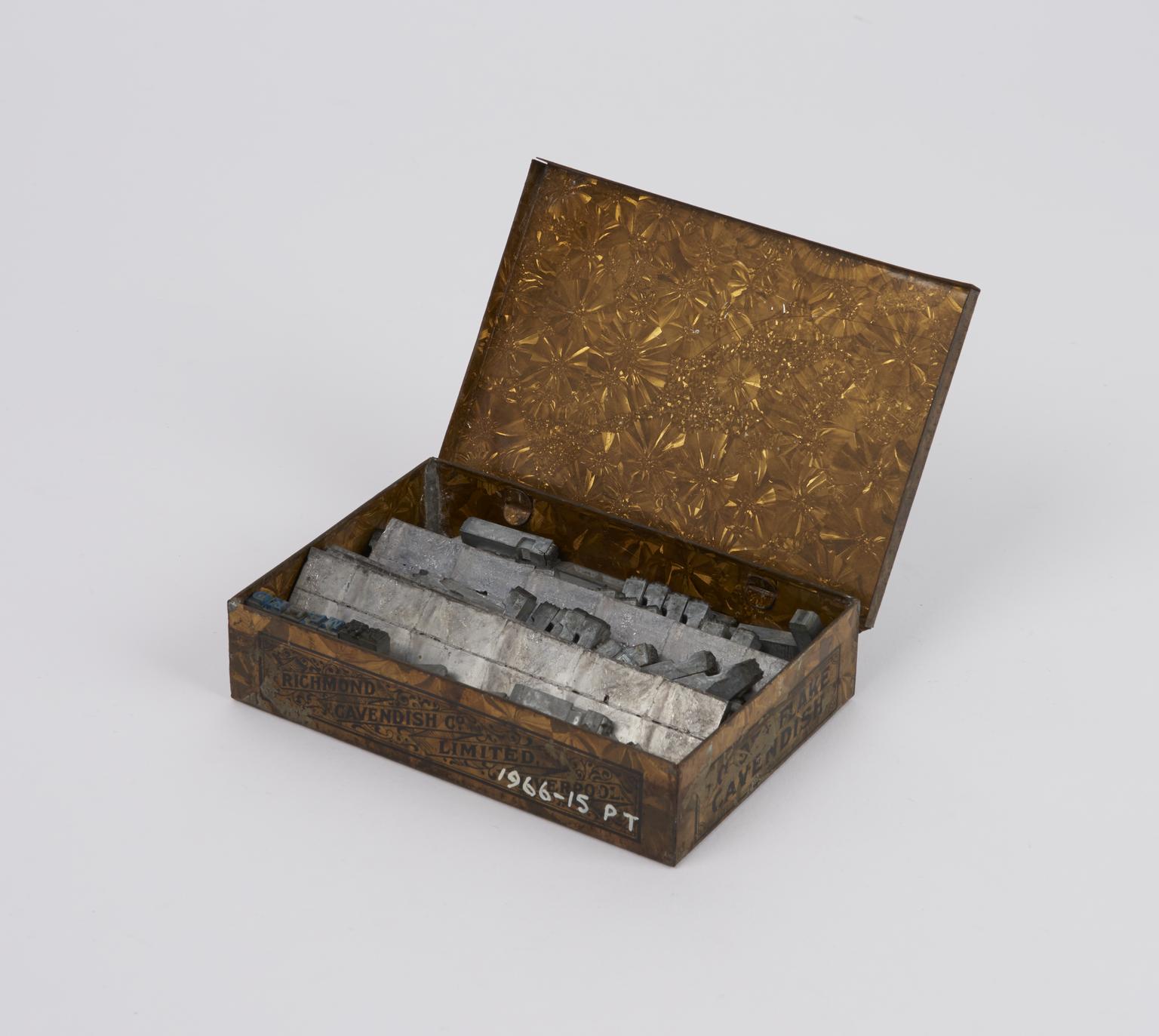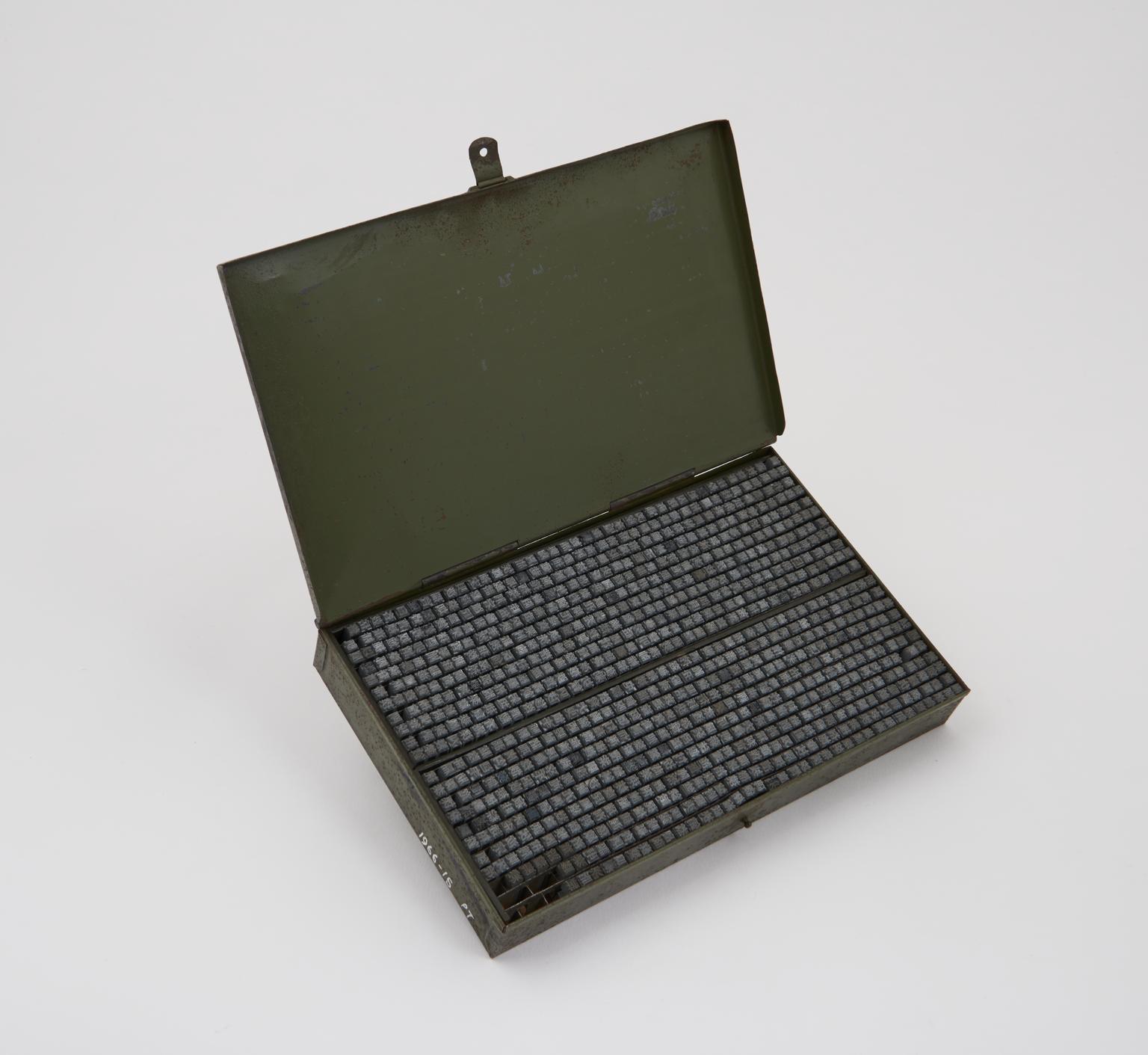
Wooden box containing Japanese type
- Materials:
- wood (unidentified) and type metal (lead, antimony, tin alloy)
- Object Number:
- 1966-15/1
- type:
- type

Japanese Typewriter and additional boxes of type. Typewriter produced by the Nippon Typewriter Company in 1920.
While typewriters which use the Latin alphabet were popularised in the late 19th Century, the adaptation of this technology to work for languages such as Japanese took longer to develop. This complexity stems from the fact that Japanese uses three separate alphabets, Hiragana, Katakana and Kanji. The largest of these alphabets is Kanji, which is made up of thousands of different characters. Although ‘kana’ (hiragana & katakana) typewriters had been created, the incorporation of Kanji proved difficult. Despite these issues, around 40 years after Remington began producing the first Latin-alphabet typewriters, Kyota Sugimoto invented the first Japanese typewriter in 1915. This was a highly significant creation and in 1985, as part of their centenary celebrations, Sugimoto was named by the Japanese Patent Office as one of Japan’s 10 greatest inventors.
This typewriter reflects Sugimoto’s original patent and was produced by the Nippon Typewriter Company. This model appears to have been made in 1920. It is dated in a traditional format, noting the ‘date of manufacture’ as the 11th month of the 9th year. This likely refers to Emperor Taisho who reigned July 1912-December 1926, meaning this model was produced in 1920. There is reference to changes in the structure of these typewriters in 1927 to incorporate elements such as a longer paper cylinder. This suggests that the date refers to 1920 rather than the 9th year of the following emperor, 1934. The patent for the original style of typewriter was first granted in Japan in 1915 and in America in 1917, so this object reflects a relatively early model.
The letter tray, or ‘type-nest’, of this typewriter can hold around 2,450 pieces of type each marked with an individual character. This roughly reflects the baseline number of characters for Japanese students who complete compulsory education and so is a suitable quantity for a typewriter. These characters represent some of the most used Kanji as well as Hiragana and Katakana alphabets.
The operator would control this typewriter using two handles, one on the front of the type-nest, which moves it side to side to enable access to all the characters, and another which controls the main typing mechanism. Both of these components are on rollers to enable easy movement. Once the striker has been positioned over the required character the operator pushes down on the typing mechanism handle. This causes a pin under the type block to be raised, pushing the block into the striker. Then, a wheel of ink moves over the block before the character is raised and stamped onto the paper. These movements are then reversed and the character is returned to its original location in the type-nest. Contrary to Latin alphabet typewriters, this machine differs in that it types characters from top bottom, right to left, conforming to Japanese style.






